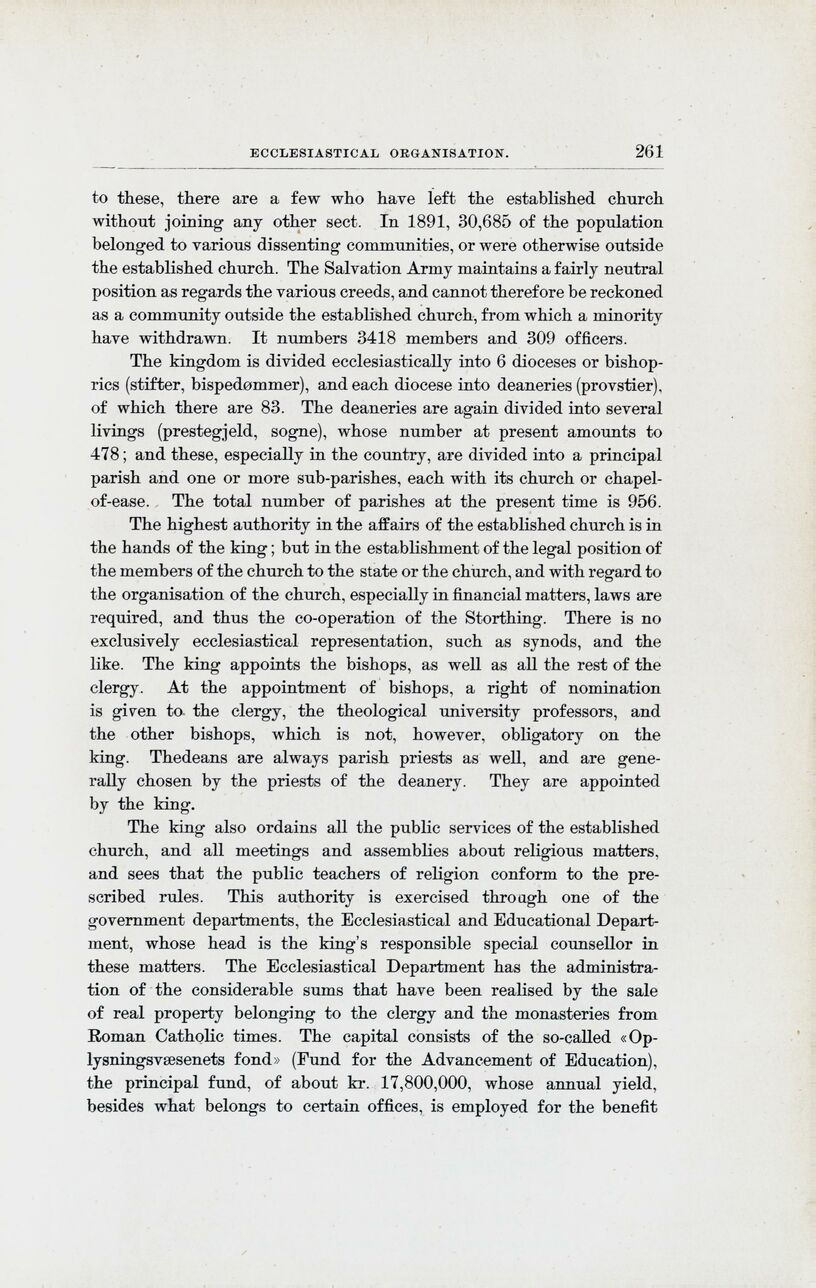
Full resolution (JPEG) - On this page / på denna sida - Ecclesiastical Organisation, by E. I. Hambro

<< prev. page << föreg. sida << >> nästa sida >> next page >>
Below is the raw OCR text
from the above scanned image.
Do you see an error? Proofread the page now!
Här nedan syns maskintolkade texten från faksimilbilden ovan.
Ser du något fel? Korrekturläs sidan nu!
This page has been proofread at least once.
(diff)
(history)
Denna sida har korrekturlästs minst en gång.
(skillnad)
(historik)
to these, there are a few who have left the established church
without joining any other sect. In 1891, 30,685 of the population
belonged to various dissenting communities, or were otherwise outside
the established church. The Salvation Army maintains a fairly neutral
position as regards the various creeds, and cannot therefore be reckoned
as a community outside the established church, from which a minority
have withdrawn. It numbers 3418 members and 309 officers.
The kingdom is divided ecclesiastically into 6 dioceses or
bishoprics (stifter, bispedømmer), and each diocese into deaneries (provstier),
of which there are 83. The deaneries are again divided into several
livings (prestegjeld, sogne), whose number at present amounts to
478; and these, especially in the country, are divided into a principal
parish and one or more sub-parishes, each with its church or
chapel-of-ease. The total number of parishes at the present time is 956.
The highest authority in the affairs of the established church is in
the hands of the king; but in the establishment of the legal position of
the members of the church to the state or the church, and with regard to
the organisation of the church, especially in financial matters, laws are
required, and thus the co-operation of the Storthing. There is no
exclusively ecclesiastical representation, such as synods, and the
like. The king appoints the bishops, as well as all the rest of the
clergy. At the appointment of bishops, a right of nomination
is given to the clergy, the theological university professors, and
the other bishops, which is not, however, obligatory on the
king. Thedeans [[** sic, = The de-]] are always parish priests as well, and are
generally chosen by the priests of the deanery. They are appointed
by the king.
The king also ordains all the public services of the established
church, and all meetings and assemblies about religious matters,
and sees that the public teachers of religion conform to the
prescribed rules. This authority is exercised through one of the
government departments, the Ecclesiastical and Educational
Department, whose head is the king’s responsible special counsellor in
these matters. The Ecclesiastical Department has the
administration of the considerable sums that have been realised by the sale
of real property belonging to the clergy and the monasteries from
Roman Catholic times. The capital consists of the so-called
«Oplysningsvæsenets fond» (Fund for the Advancement of Education),
the principal fund, of about kr. 17,800,000, whose annual yield,
besides what belongs to certain offices, is employed for the benefit
<< prev. page << föreg. sida << >> nästa sida >> next page >>